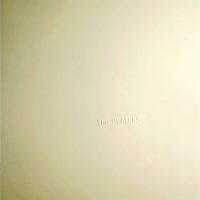Is Continuing Story of Bungalow Bill Versus the Fall by Elo
 Written by: Lennon-McCartney
Written by: Lennon-McCartney
Recorded: 8 October 1968
Producer: George Martin
Engineer: Ken Scott
Released: 22 November 1968 (UK), 25 November 1968 (US)
Available on:
The Beatles (White Album)
Personnel
John Lennon: vocals, acoustic guitar, organ
Paul McCartney: backing vocals, bass
George Harrison: backing vocals, acoustic guitar
Ringo Starr: backing vocals, drums, tambourine
Yoko Ono: vocals, backing vocals
Chris Thomas: Mellotron
Various others, including Maureen Starkey: backing vocals
'The Continuing Story Of Bungalow Bill' was written in 1968 in Rishikesh, India. It was inspired by an American visitor who departed for a tiger-killing spree before returning to the ashram to seek spiritual enlightenment.
That was written about a guy in Maharishi's meditation camp who took a short break to go shoot a few poor tigers, and then came back to commune with God. There used to be a character called Jungle Jim and I combined him with Buffalo Bill. It's a sort of teenage social-comment song and a bit of a joke. Yoko's on that one, I believe, singing along.
In light of John Lennon's antipathy towards Paul McCartney's 'Ob-La-Di, Ob-La-Da', it may seem odd that he was responsible for this overly frivolous singalong that appeared on the White Album.
The inspiration for the song was Richard Cooke III, known as Rik, whose mother Nancy was also on the meditation course in Rishikesh.
Then a self-important, middle-aged American woman arrived, moving a mountain of luggage into the brand-new private bungalow next to Maharishi's along with her son, a bland young man named Bill. People fled this newcomer, and no one was sorry when she left the ashram after a short time to go tiger hunting, unaware that their presence had inspired a new Beatles song – 'Bungalow Bill'.
Mia Farrow
What Falls Away
Both Rik and Nancy went on the tiger shoot. Upon their return Rik told Maharishi of his feelings of remorse, in a meeting at which Lennon and McCartney were both present.
Rik told me that he felt bad about it and said that he didn't think he'd ever kill an animal again. Maharishi said, 'You had the desire Rik and now you don't have the desire?' Then John asked, 'Don't you call that slightly life destructive?' I said, 'Well John, it was either the tiger or us. The tiger was right where we were'. That came up in the lyric as 'If looks could kill it would have been us instead of him'.
Nancy Cooke
A Hard Day's Write, Steve Turner
In the studio
The Beatles taped 'The Continuing Story Of Bungalow Bill' on 8 October 1968, following the recording of 'I'm So Tired'. It took three takes to get the basic track right, after which a number of overdubs were added.
Like 'Lucy In The Sky With Diamonds' before it, 'Bungalow Bill' consists of two musically-unconnected song ideas, joined together by three beats on a bass drum. The recording was intentionally sloppy, and anyone who happened to be available in Abbey Road was rounded up to contribute backing vocals.
George Martin's assistant Chris Thomas also added Mellotron parts, using the instrument's mandolin sound in the verses and the trombone in the choruses.
The most notable feature of the song, however, is the appearance by Yoko Ono on the line "Not when he looked so fierce". It was the first – and only – time a female lead vocal appeared on a Beatles recording, and reflected Ono's increasing studio presence at the time (as well as her shaky grasp of melody).
The Spanish guitar introduction, as noted by Mark Lewisohn in The Complete Beatles Recording Sessions, was recorded separately and later edited onto the song. It is likely that this took place during The Beatles' only 24-hour session, spread over 16 and 17 October 1968, during which a number of edit pieces and crossfades for the White Album were finalised.
The guitar flourish was one of a number of seven-second instrument samples included on the Mellotron Mark II. The identity of the guitarist is said to have been Eric Cook, an Australian session musician, although this is unconfirmed.
Source: https://www.beatlesbible.com/songs/the-continuing-story-of-bungalow-bill/
0 Response to "Is Continuing Story of Bungalow Bill Versus the Fall by Elo"
Post a Comment